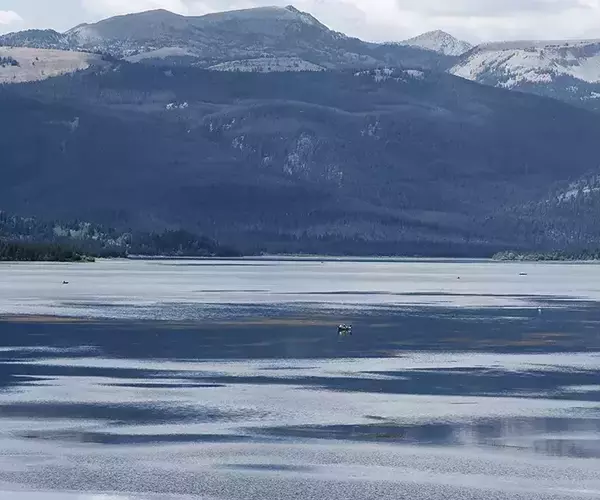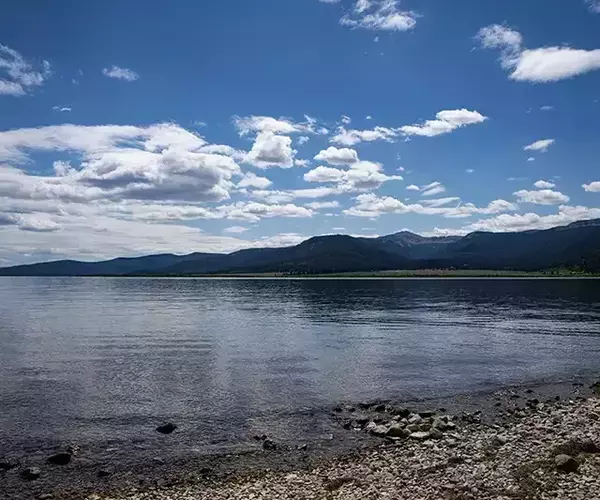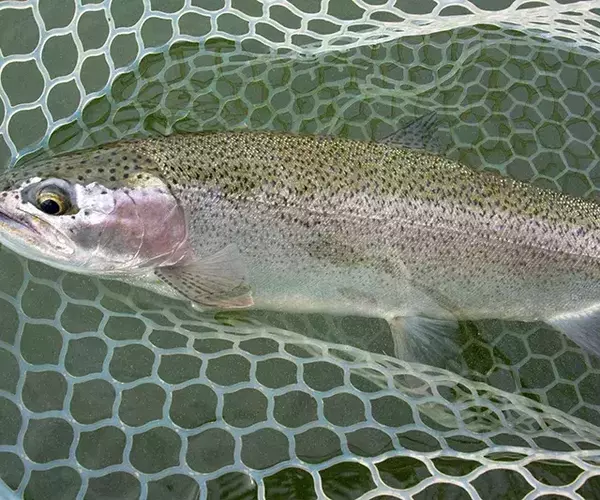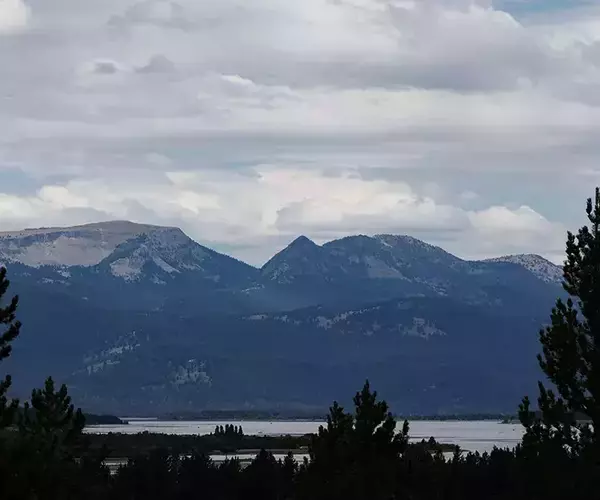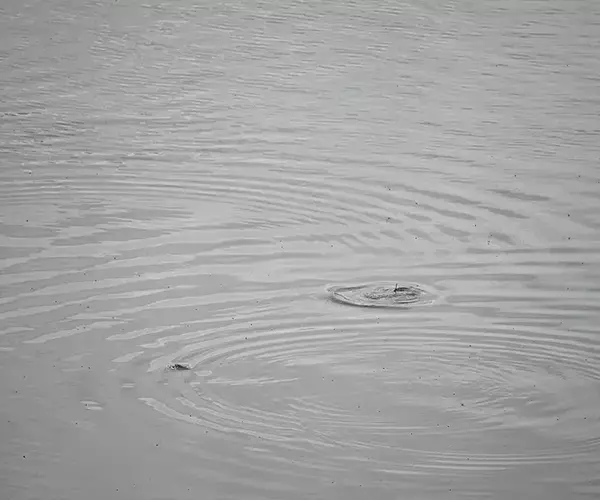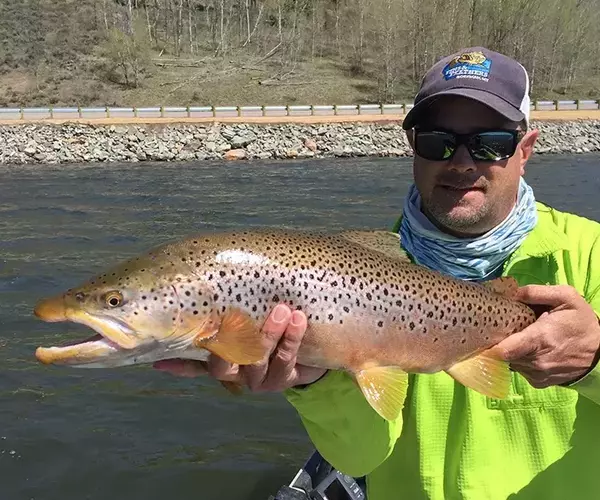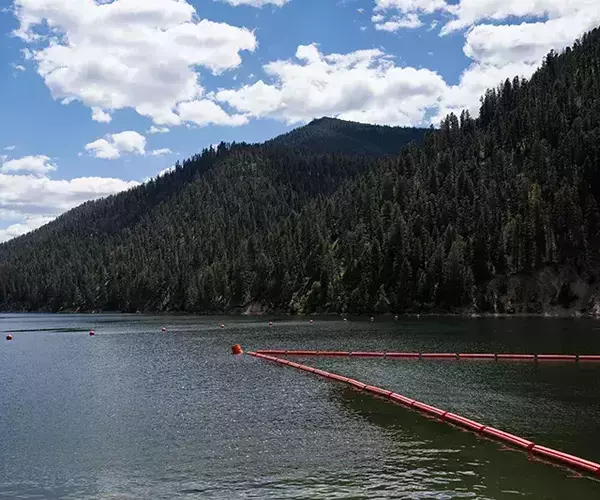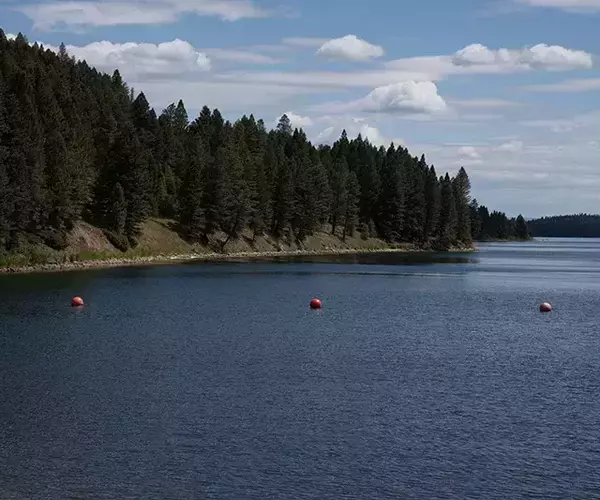Hebgen Lake Fly Fishing in Montana
Hebgen Lake is a Montana fly fishing legend amongst anglers fishing and exploring the Greater Yellowstone region. Located just outside West Yellowstone in Gallatin County, Hebgen sits at an elevation of 6,539 feet and stretches more than 15 miles in length with nearly 4,000 surface acres of water. The lake was formed in 1914 with the completion of Hebgen Dam on the Madison River, creating a large reservoir that is managed for irrigation storage, Madison River streamflow, and recreational activities by Northwest Energy
The history of Hebgen Lake is inseparable from the landscape of the Madison River Canyon. In August 1959, a devastating earthquake triggered a landslide downstream that created Quake Lake, forever linking the two reservoirs. Hebgen itself survived the quake, though significant damage to the dam required emergency repairs.
Hebgen Lake has become one of the most celebrated destinations for stillwater anglers fly fishing in Montana, known for its large populations of trout and the famous “gulper fishing” that draws anglers from around the world.
Hebgen Lake offers unique opportunities across the seasons. From ice-out in spring through the crisp, colorful days of fall, the hatches, tactics, and lake sections change dramatically.
Spring Fly Fishing on Hebgen Lake
Spring fly fishing on Hebgen begins once the ice recedes, typically in late April or early May , depending on the year. The cold waters are home to prolific populations of chironomids (midges), which are particularly active during the spring. As May progresses, anglers encounter increasing activity from leeches, damselfly nymphs, and the occasional early-season mayfly.
Rainbow trout are particularly active in spring, moving into shallow bays, points, and near inlet streams as they complete their spawning cycles. These fish are hungry, aggressive, and often willing to chase subsurface patterns throughout the early summer.
Indicator nymphing is the most effective approach during the early weeks of spring. Balanced leeches paired with chironomid pupae beneath slip indicators allow anglers to suspend patterns at precise depths, often 10 to 15 feet down. Patience and long leaders are key, as fish frequently hold deep before warming temperatures push them higher in the water column.
Full-sinking lines with leech, damselfly, or small baitfish patterns work well when trout are spread out across mid-depth zones. Slow retrieves and long pauses are key in the early-season cold water.
As water temperatures climb toward June, anglers can expect more active fish cruising along shallow flats during the mid-day hours.
In spring, Hebgen’s north shore bays and inlets are prime areas for indicator fishing suspended Chironomid patterns. Anglers fishing from float tubes, pontoons, or small boats have the best access, as shore fishing can be limited when water levels are high as spring runoff starts to fill the reservoir.
Summer Fly Fishing on Hebgen Lake
Beginning in July, callibaetis and trico mayflies hatch in staggering numbers, attracting pods of cruising rainbow and brown trout that rise steadily in open water. The distinctive “gulp” sound of trout sipping mayflies is the hallmark of Hebgen’s legendary summer fishing—and the reason it has earned its global reputation.
Morning hours typically feature callibaetis spinner falls, with fish rising consistently until the wind picks up around midday. Tricos often extend the surface activity into late morning, giving anglers an unforgettable dry fly experience.
Dry fly fishing dominates Hebgen’s summer season. Long leaders tapered to fine tippets (5X–6X) and accurate 30–50 foot casts are essential to success. Anglers must track the direction of cruising trout and present delicate callibaetis or trico imitations directly into that path. The technical nature of this fly fishing will test an angler’s skill in every area, from fly selection to presentation.
When surface action slows as the hatches slow or the wind picks up, anglers switch to dry-dropper setups or slow retrieves with small mayfly nymphs. Streamer fly fishing can also produce results along timbered shorelines, especially during low-light periods in early morning or late evening.
The Madison Arm and Grayling Arm are epicenters of gulper fishing. These broad, shallow flats provide ideal habitat for mayflies and are easily accessible by boat or float tube. The South Fork Arm and Horse Butte areas are also renowned gulper zones and are often less crowded. Calm, windless mornings provide the best opportunities, so anglers should plan to be on the water early and anticipate the wind picking up quickly once the first breeze is felt.
Fall Fly Fishing on Hebgen Lake
Fall on Hebgen is characterized by crisp mornings, colorful foliage, and some of the year’s best opportunities to target trophy brown trout. Callibaetis hatches taper off by September, but terrestrial insects—ants and beetles—still provide exciting surface action through early fall. By mid-September, trout become increasingly aggressive with cooling water temperatures.
Baitfish patterns become more important, and streamers take center stage as both rainbows and browns chase larger prey in the cooling waters.
Fall is streamer fly fishing season on Hebgen Lake. Anglers armed with full-sinking lines and patterns imitating sculpins, minnows, and leeches can connect with the lake’s largest browns and rainbows. Varied retrieves along weed edges, drop-offs, and submerged timber are effective searching strategies
Hoppers, beetles, and flying ants are staples for the fly angler during September. By October, most fly fishing is subsurface, with streamer patterns dominating until ice returns.
Fall fishing is best in the Madison Arm, where large brown trout stage before running up the Madison River to spawn. The South Fork Arm and along Hebgen Dam are also productive areas for targeting aggressive pre-spawn fish. Anglers fly fishing from small boats have the advantage this time of year, covering lots of water looking for aggressive fish willing to chase big streamers.
The Legendary Hebgen Lake
Hebgen Lake offers one of the most dynamic and rewarding Montana fly fishing experiences. From the early-season chironomid hatches of spring, to the world-famous gulper fishing of summer, and the trophy trout streamer action of fall, Hebgen provides a season-by-season progression.
Its stunning mountain backdrop, healthy trout populations, and legendary hatches have cemented Hebgen as a must-fish destination in Southwest Montana.
With decades of experience on Montana’s lakes and rivers, the expert Montana fly fishing guides at Fins and Feathers Guide Service know how to put anglers in the right place at the right time on Hebgen Lake. Consider adding a day of fly fishing Hebgen Lake to a multi-day itinerary with our guides during the summertime to add some nice variety to your vacation.
Hebgen Lake day trips are best-suited to anglers with advanced or intermediate fly fishing skills. These trips can be long days as the lake is about 2 hours from Bozeman and morning sessions are optimal. We only offer guided trips on Hebgen Lake to our guests fishing with us for a minimum of 3 days. Be sure to mention your interest in fishing Hebgen when making your reservation via e-mail or by calling us at 1-406-468-5019.
Related Articles From the Montana Fly Fishing Blog

Category: Bozeman Fly Fishing Trip Planning, Hatches
The 4 Best Bozeman Fly Fishing Hatches
Post Date: 05/20/2025
Bozeman fly fishing is renowned for diverse rivers and prolific insect hatches. Here are the best 4 insect hatches that advanced anglers should consider when planning their fly fishing vacation...
Read Article